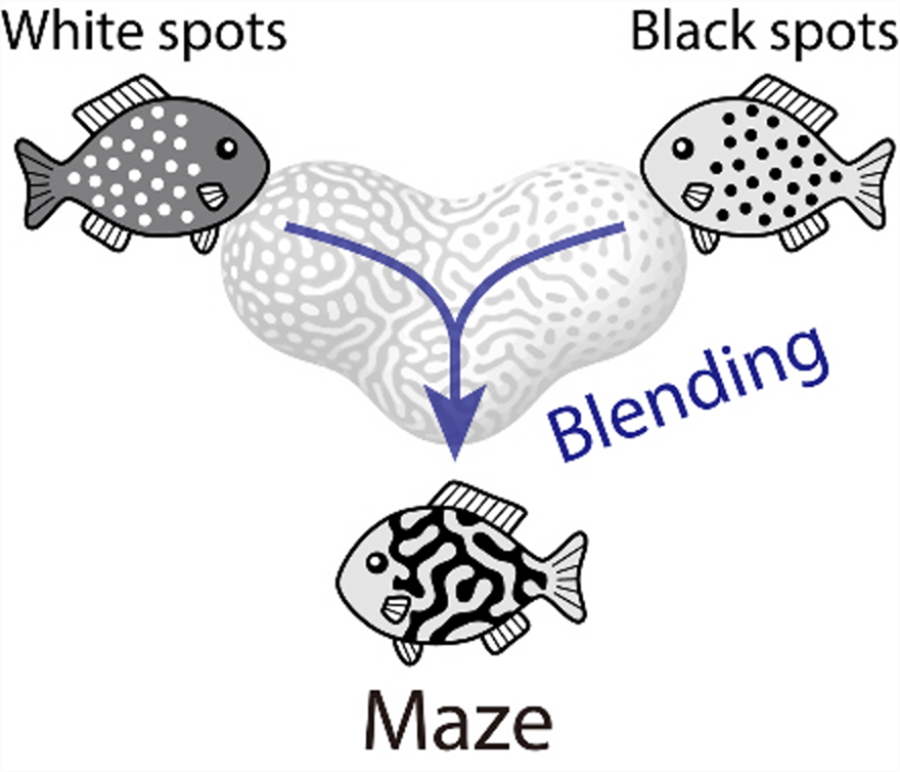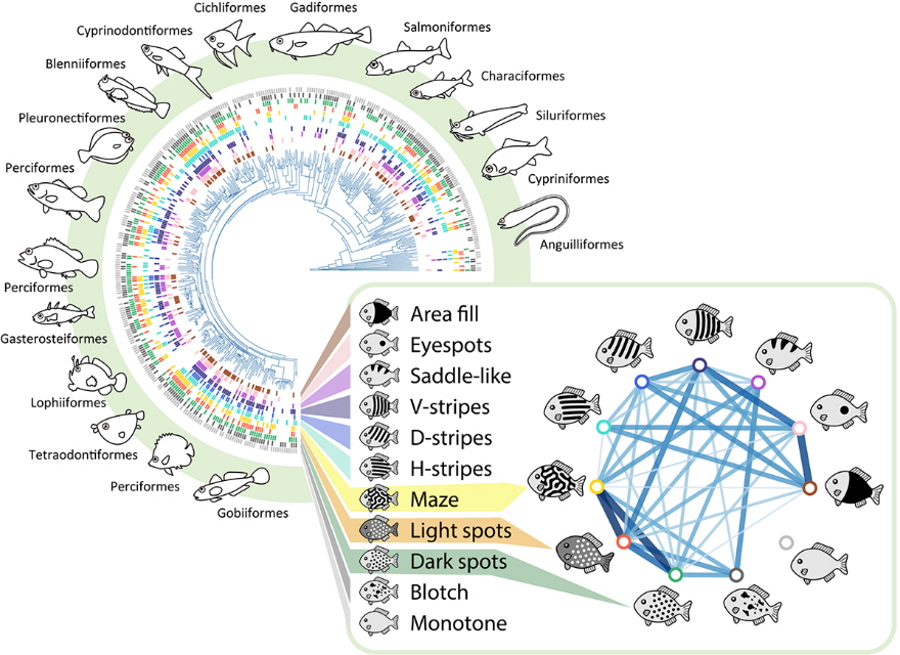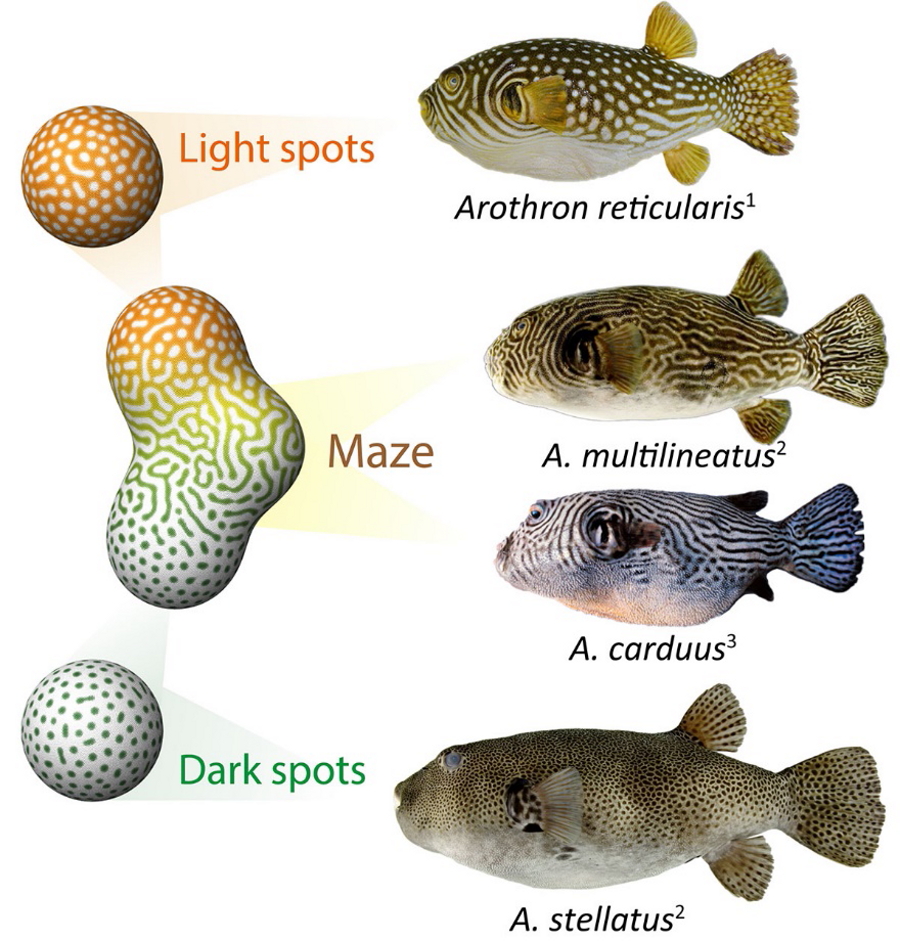Pattern blending enriches the diversity of animal colorations
| Journal | Sci. Adv. 6(49):eabb9107 (2020) |
|---|---|
| Title | Pattern blending enriches the diversity of animal colorations |
| Laboratory | Laboratory of Pattern Formation |
Abstract
Animals exhibit a fascinating variety of skin patterns, but mechanisms underlying this diversity remain largely unknown, particularly for complex and camouflaged colorations. A mathematical model predicts that intricate color patterns can be formed by "pattern blending" between simple motifs via hybridization. Here, I analyzed the skin patterns of 18,114 fish species and found strong mechanistic associations between camouflaged labyrinthine patterns and simple spot motifs, showing remarkable consistency with the pattern blending hypothesis. Genomic analyses confirmed that the coloring on multiple labyrinthine fish species has originated from pattern blending by hybridization, and phylogenetic comparative analyses have further substantiated the pattern blending hypothesis in multiple major fish lineages. These findings provide a plausible mechanistic explanation for the characteristic diversity of animal markings and suggest a novel evolutionary process of complex and camouflaged colorations by means of pattern blending.

Fig. 1
Pattern blending. Complex patterns can be formed by "pattern blending" between simple motifs via hybridization. (credit: Seita Miyazawa)

Fig. 2
Fish color pattern diversity and associations among pattern motifs. Pattern analysis of more than 18,000 fish species (upper left) revealed strong associations between camouflaged maze patterns and simple spot motifs (lower right). (credit: Seita Miyazawa)

Fig. 3
Pattern blending in model simulation and actual animals. Blending of light and dark spots via "in silico hybridization" results in maze patterns (left). Genomic analyses confirmed the hybrid origin of fishes having maze patterns (right). (credit: Seita Miyazawa (left), Photographs by Hiroshi Senou, Kanagawa Prefectural Museum of Natural History (1), The Kagoshima University Museum (2), and Keiichi Matsuura (3).)
| Authors | Seita Miyazawa (1)
|
|---|---|
| PubMed | 33268371 |
